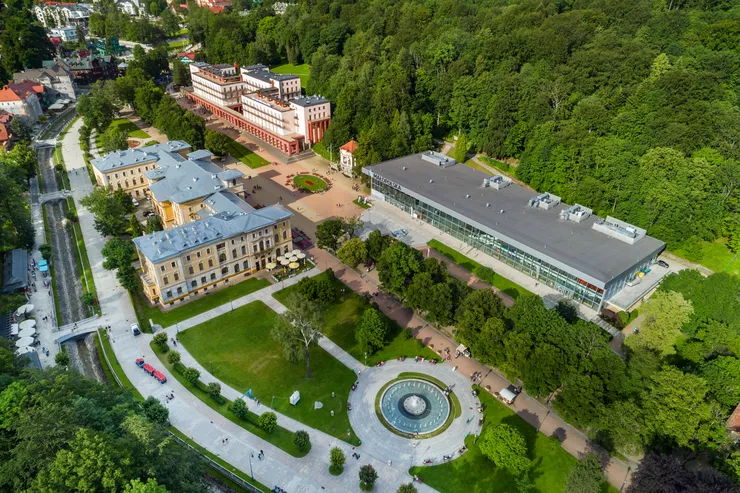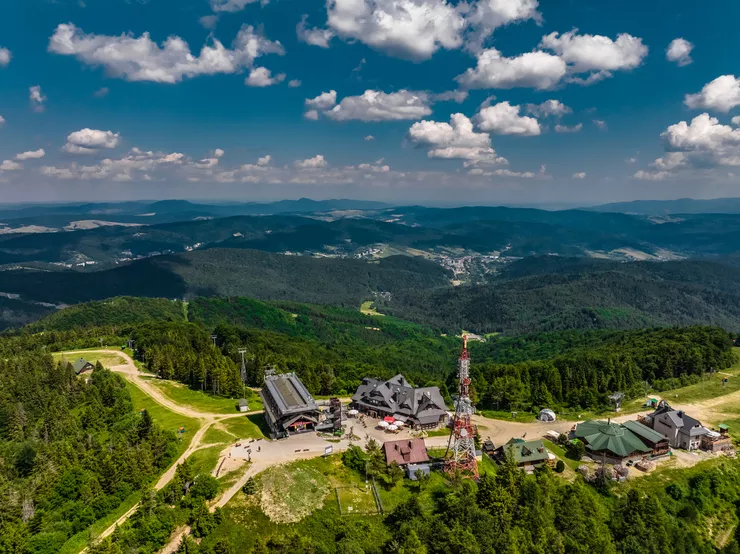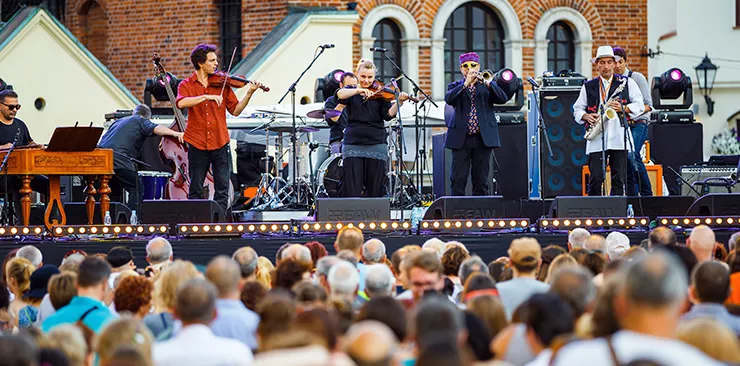





Live mineral waters.
Come to Małopolska spas to make friends with the real mineral waters. Unbottled and running from their springs straight into your mug in the numerous pumping rooms, or perhaps into a mudbath therapy tub? Or with the drops broken into a gentle spray for you to inhale and soothe that aching throat? The options are countless.

The best-known destination is Krynica Zdrój. The reasons predate by many decades the International Economic Forum launched in 1992, whose participants, having discovered Krynica, eagerly return to it. The place has enjoyed a great history with plentiful spa entertainment, dazzling with the glitter of the crazy 1920s and 30s, and since then attracting the greatest artists, some of whom made Krynica their home. To taste the mineral waters, visit the two big pumping rooms taking both sides of the main promenade in the town’s centre. We do suggest that you start your adventure with Krynica mineral waters with Zdrój Główny (literally “the main spring”) or Słotwinianka, which taste just like water with minerals. Yet, we advise some caution while tasting the rotten-egg-smelling Jan as it tastes precisely what it smells. And, cross our hearts, it is curative as hell.
Speaking of curative properties: the waters and muds are used for perhaps the widest range of spa treatments and procedures, so it can be a good idea to take a peek here to learn their full scope. Krynica offers lavish and plentiful facilities, and its fame – of Poland’s greatest and largest spa with mineral waters – has resulted in satellite ones developing with time in the neighbourhood. Technically, Czarny Potok situated just over a low ridge of hills from the spa’s centre, is still Krynica. Apart from a spa centre it features the bottom station of Poland’s longest cable car taking you to Jaworzyna Krynicka.
Lying some distance down the river, in a valley branching off from the Poprad Valley, is Muszyna an independent spa town with Złockie and Szczawnik neighbourhoods. Apart from being a spa centre it is a perfect starting point for walkers and cyclists.
A couple of miles farther down up the Poprad Valley, on a picturesque ledge high above the river, Żegiestów tells a different tale. Its magnesium-saturated mineral springs: Anna, Zofia II, and Żegiestów II started attracting tourists nearly two centuries ago. Little wonder that when “going to the waters” became fashionable a hundred years later, the Żegiestów Spa House – a gem of Polish Modernism was built here, slightly below the luxuriant villas hidden among the forest. Unfortunately, in the communist days, its history went pear-shaped like that of the whole region, and the splendid building turned into a monumental ruin. Luckily, it is expected to rise phoenix-like from the ashes, as it is currently being worked on so that, like the other resorts here it can cater for your needs, offering baths, massages, hydrotherapy, kinesitherapy, inhalations, and mud treatment.
Wysowa-Zdrój is a perfect refuge for those look for a healthy mix of healing and chilling. A refuge precisely, as it is surrounded by the low wooded hills of the Beskid Niski mountains. Yet one where you have access to the full range to modern spa facilities and procedures, and – as the word “Zdrój” promises – a range of curative mineral waters including Franciszek, Józef, and Aleksandra helpful in treating respiratory, digestive and other disorders.
We’ve only touched the surface of all those waters, and have not yet invited you to Szczawnica, Wieliczka and Bochnia Salt mines (yes, they offer spa treatment too), Rabka and all the others. To help you make your decision, here are some more hints to help you choose your preferred place, where you can relax and enjoy Małopolska curative waters.
Let me be honest with you: the taste for chilling around mineral springs in the mountains is not a Małopolska invention. In the 19th century it came from around the Alps, accompanied by a particular architectural style. Precisely the reason why you can find Swiss chalets in the spas of Małopolska. And their curative waters boast healing values unrivalled by any of the waters from around the Alps.
If a Polish place name contains word “Zdrój”, an old Polish word for “spring”, you can easily tell that it is a spa. However, not all Polish spas have it in their names – Szczawnica is derived from another old Polish word for it. Another example is Rabka, a place that became famous for long-term treatment of children.
Each comfortable pod of the cable-car to the top of Jaworzyna Krynicka 1114m/3655ft asl can take up to six people. And do we need to mention that the mountains around it are perfect for walking and hiking?
Many restaurants and cafés offer local mineral waters, and they are also available in the shops. Make sure that the bottle reads “woda mineralna” as only those are natural, while others may have their mineral content boosted artificially or be close to your regular tap water.








